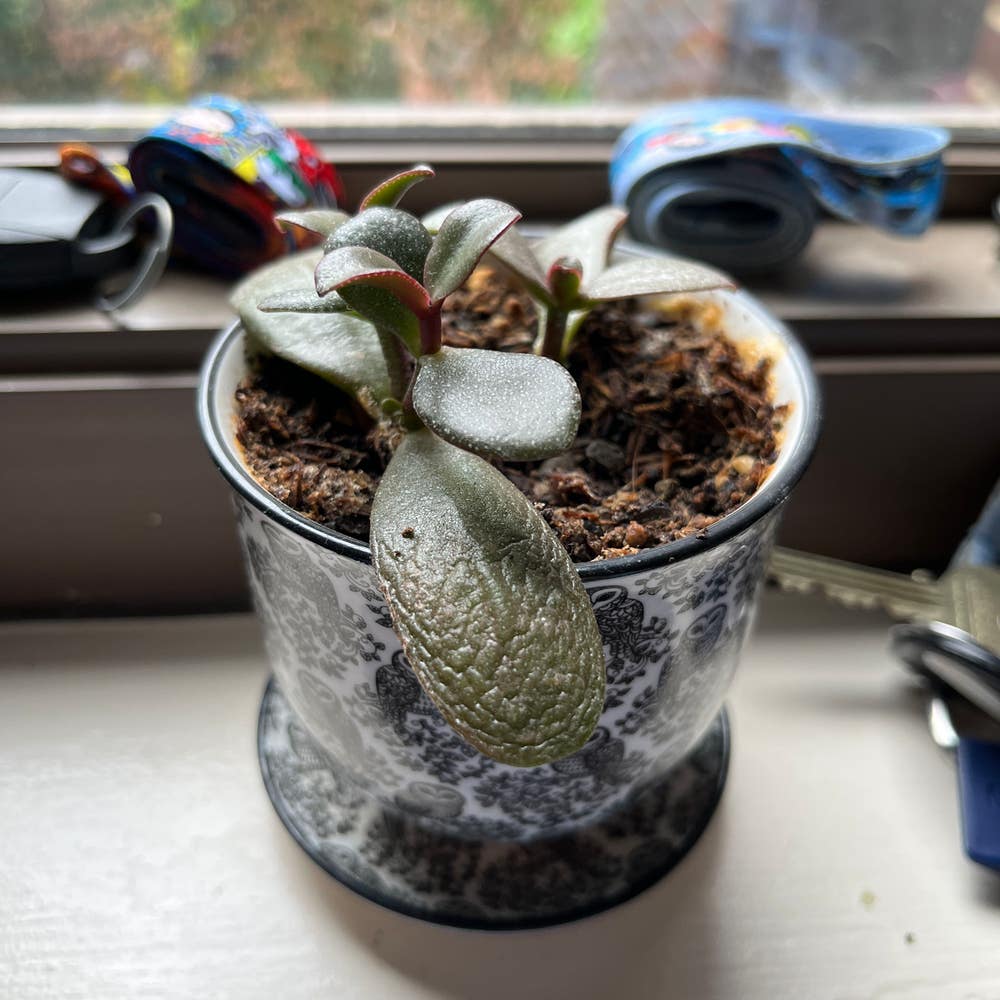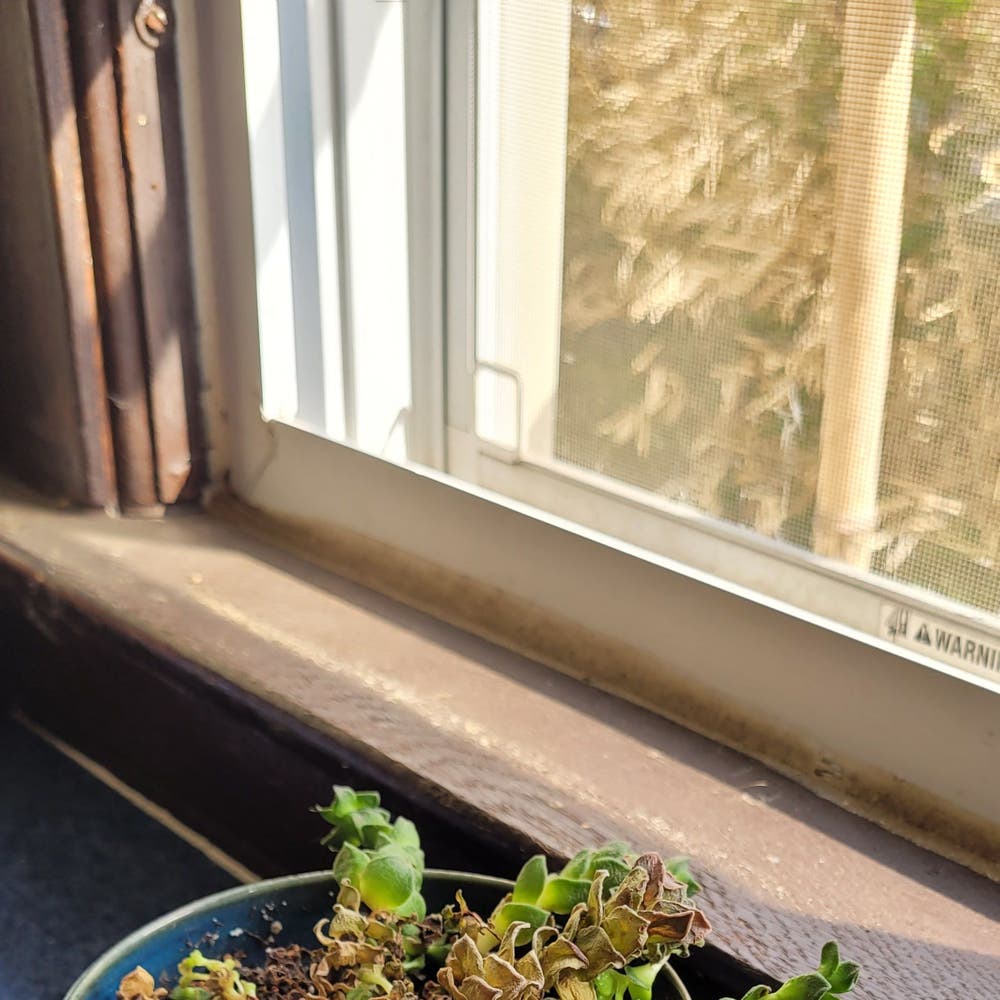How Can You Tell If A Crassula mesembryanthemoides Is Dying?
Jan 14, 2024•5 min read
- Wilting or discoloration signals pests, disease, or watering issues.
- Consistent care prevents temperature stress and light-related damage.
- Recovery requires patience: prune, adjust care, and monitor for pests.
Spotting Trouble: Key Symptoms of Distress
🚩 Wilting, Yellowing, or Browning Leaves
Wilting leaves are like red flags in a sea of green, signaling that your Crassula mesembryanthemoides might be in trouble. Yellowing could be a sign of overwatering or a nutrient issue, while browning often points to underwatering or low humidity.
🔍 Unusual Spots or Discoloration
Keep an eye out for spots that are tan, dark brown, or black—these could be the calling cards of fungal infections or pest invasions. Discoloration can also indicate bacterial issues, so don't shrug it off.
📉 Stunted Growth and Other Alarming Changes
If your plant's growth has hit a wall, it's time to troubleshoot. Look for symptoms like leaf curling or a lack of those vibrant pink stripes, which can mean your plant is begging for a change in its care routine.
Water Woes: Over and Under-Watering
💦 Over-watering Hazards
Over-watering is like giving your plant a non-stop water buffet—it's too much of a good thing. The signs are clear: wet soil that won't quit, leaves that drop faster than a hot potato, and a general look of green malaise. If your plant's soil feels like a wet sponge, it's time to intervene.
Correcting the Over-watering Overstep
First, check the soil—if it's clinging to your finger, it's a no-go for H2O. A pot that feels heavier than your last dumbbell set might mean waterlogged roots. If your plant perks up after watering, it was thirsty; if it stays droopy, you've overdone it. Make sure your pot isn't hoarding water like a dragon with gold—drainage holes are a must.
💧 The Perils of Under-Watering
Under-watering turns your plant into a dry husk of its former self. The soil will be as dry as a desert, and the leaves might look more wrinkled than your favorite linen shirt. If your plant's topsoil feels like a dry martini, it's time to water.
Hydration Help for the Under-Watered
Consistency is your new best friend—watering should be as regular as your morning coffee. The soil should feel moist, like a perfectly baked cake, not a swamp or a sandpit. If the topsoil is dry, it's a green light to water; if it's damp, put the watering can down. Remember, your plant's thirst level changes with the seasons—drink more in the summer, less in the winter.
Light and Temperature: Finding the Sweet Spot
🌞 Too Much Sun, Not Enough Light
Leaf scorching is the plant equivalent of a nasty sunburn. Direct sunlight can be brutal, leaving your Crassula mesembryanthemoides with crispy, discolored leaves. If you notice such damage, it's time to shift to a location with bright, indirect light. This move can prevent the botanical equivalent of peeling shoulders and aloe vera baths.
Leggy growth is your plant's awkward way of saying it needs more light. It's stretching out, reaching for the sun like a kid on tiptoes at a candy counter. If you spot this, consider introducing supplemental lighting or repositioning your plant to a spot where it can bask in the glow without getting fried.
🌡️ Temperature Tantrums
Crassula mesembryanthemoides doesn't appreciate temperature mood swings. It prefers a steady, consistent climate—think of it as the plant's comfort food. Sudden temperature changes can cause your plant to throw a leafy fit, resulting in pale leaves and stunted growth.
If your plant is giving you the cold shoulder or the hot hand, it's time to stabilize the environment. Keep it away from drafty windows or hot radiators. Aim for a room temperature that's consistently spring-like—not too hot, not too cold. Your plant will thank you by not going into a state of shock, which in plant terms, is a lot less dramatic than in humans but just as concerning.
Battling Pests and Pathogens
🐛 Common Critters: Mealybugs, Scale, and Spider Mites
Your Crassula mesembryanthemoides may be under siege by mealybugs, scale, and spider mites. These pests are sap-sucking freeloaders that can cause significant harm if left unchecked.
Mealybugs resemble tiny cotton clusters, often found hiding in crevices. Scale insects masquerade as small, bumpy growths on stems and leaves. Spider mites, meanwhile, are nearly invisible but betray their presence with fine webbing and yellowed leaves.
To evict these pests, start with a simple solution of 1 part 70% isopropyl alcohol to 4 parts water. Apply weekly, and for stubborn cases, consider insecticidal soap or neem oil. Remember, vigilance is key—regular inspections can prevent a full-blown infestation.
🍄 Mold and Fungus Among Us
Fungal foes like sooty mold can also plague your plant, often as a result of the sticky honeydew left behind by pests. This mold appears as dark, smudgy patches on leaves and stems.
To combat mold, first eliminate the underlying pest problem. Then, gently wipe affected areas with a damp cloth to remove the mold. In severe cases, a fungicide may be necessary, but prevention is always the best medicine—maintain proper watering habits to avoid creating a mold-friendly environment.
Reviving Your Crassula mesembryanthemoides
🦠 Root Rot: The Silent Killer
Root rot is the ninja of plant problems—silent but deadly. Spot it by looking for discolored, mushy roots. Prevent it by using well-draining soil and being cautious not to overwater.
🚑 The Recovery Plan
First, snip away any black or mushy roots with sterilized scissors. It's like giving your plant a life-saving operation. Then, let the roots air out and repot in fresh, dry soil. If you're feeling extra cautious, treat with an antifungal.
Prune the plant to reduce stress and encourage new growth, but don't go Edward Scissorhands on it—be gentle. Place your plant in a stable environment to recover, away from direct sunlight or temperature swings. Resume watering after a week or two, once the plant has settled.
Inspect regularly to catch any future issues early. If the rot is extensive, it might be time to propagate. Snip a healthy piece, let it callous, and start anew. Remember, it's not a sprint; it's a marathon to recovery.




